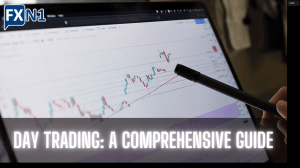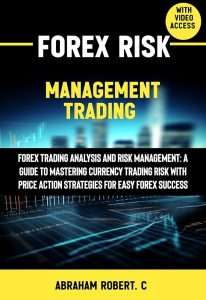A Comprehensive Guide to Forex Trading
Master the Forex market! This comprehensive guide unlocks the secrets to successful trading, covering fundamentals, strategies, and risk management. Start your Forex journey today!
The foreign exchange market, or Forex, is a global decentralized market where currencies are traded. It’s the largest and most liquid market in the world, operating 24 hours a day, five days a week. Understanding its intricacies requires dedication and a strategic approach. This comprehensive guide will delve into the essential aspects of Forex trading, equipping you with the knowledge you need to navigate this dynamic environment successfully. We’ll cover everything from fundamental analysis to risk management, providing a solid foundation for your trading journey.
Understanding the Forex Market
Before diving into trading strategies, it’s crucial to grasp the fundamental principles of the Forex market. This involves understanding currency pairs, how they are quoted, and the factors that influence their price movements. Currency pairs represent the exchange rate between two currencies, such as EUR/USD (Euro/US Dollar) or GBP/JPY (British Pound/Japanese Yen). The first currency is the base currency, while the second is the quote currency. The quote shows how much of the quote currency is needed to buy one unit of the base currency.
Major, Minor, and Exotic Currency Pairs
Forex currency pairs are categorized into three main groups: major, minor, and exotic pairs. Major pairs involve the US dollar paired with other major global currencies like the Euro, British Pound, Japanese Yen, Swiss Franc, Canadian Dollar, and Australian Dollar. These pairs have high liquidity and trading volume, making them ideal for beginners. Minor pairs consist of two major currencies excluding the US dollar, offering slightly lower liquidity but potentially attractive opportunities. Exotic pairs involve one major currency and one from a less-developed economy, characterized by lower liquidity and higher volatility.
Factors Influencing Forex Prices
Numerous factors influence Forex price movements, making it a dynamic and unpredictable market. These include economic indicators (inflation rates, GDP growth, interest rates), geopolitical events (wars, elections, political instability), market sentiment (investor confidence, risk appetite), and central bank interventions. Understanding these factors and their impact is crucial for successful Forex trading.
- Economic Indicators: Data releases like inflation rates, employment figures, and GDP growth significantly impact currency values.
- Geopolitical Events: Global events can cause dramatic shifts in currency values due to increased uncertainty.
- Market Sentiment: Investor confidence and risk appetite greatly influence the demand for certain currencies.
- Central Bank Interventions: Central banks can intervene in the Forex market to manage their currency’s value.
Fundamental Analysis in Forex Trading
Fundamental analysis involves examining economic and political factors to predict future price movements. It focuses on understanding the underlying value of a currency based on its country’s economic health and stability. This approach contrasts with technical analysis, which relies on chart patterns and historical price data. Successful Forex trading often incorporates elements of both.
Key Economic Indicators to Watch
Several key economic indicators are closely followed by Forex traders. These include Gross Domestic Product (GDP), inflation rates, interest rates, unemployment rates, and trade balances. Positive economic data generally strengthens a currency, while negative data weakens it. However, the impact of each indicator can vary depending on the specific context and market sentiment.
Analyzing Geopolitical Events
Geopolitical events can significantly impact currency values. Political instability, wars, and international conflicts can create uncertainty and volatility in the market. Traders need to stay informed about global events and assess their potential impact on currency pairs. News sources and geopolitical analysis tools are essential for this aspect of fundamental analysis.
Technical Analysis in Forex Trading
Technical analysis uses historical price data and chart patterns to predict future price movements. It focuses on identifying trends, support and resistance levels, and other technical indicators to guide trading decisions. Unlike fundamental analysis, technical analysis doesn’t consider the underlying economic factors.
Chart Patterns and Indicators
Technical analysis utilizes various chart patterns, such as head and shoulders, double tops/bottoms, and triangles, to identify potential price reversals or continuations; It also employs technical indicators like moving averages, relative strength index (RSI), and MACD to assess momentum and potential trading signals. Understanding these tools is crucial for technical trading.
Support and Resistance Levels
Support and resistance levels represent price points where the price is expected to encounter buying or selling pressure. Support levels indicate prices where buyers are likely to step in and prevent further declines, while resistance levels indicate prices where sellers are likely to emerge and prevent further increases. Identifying these levels is crucial for setting stop-loss and take-profit orders.
Risk Management in Forex Trading
Risk management is paramount in Forex trading. It involves strategies and techniques to limit potential losses and protect your capital. Ignoring risk management can lead to significant financial setbacks. Effective risk management is not about avoiding risk entirely, but rather about managing it intelligently.
Position Sizing and Stop-Loss Orders
Position sizing refers to determining the appropriate amount of capital to allocate to each trade. It’s crucial to avoid over-leveraging and risking more than you can afford to lose. Stop-loss orders automatically exit a trade when the price reaches a predetermined level, limiting potential losses. Setting appropriate stop-losses is a critical element of risk management.
Take-Profit Orders and Trailing Stops
Take-profit orders automatically close a trade when the price reaches a predetermined profit target, securing your gains. Trailing stops are dynamic stop-loss orders that adjust automatically as the price moves in your favor, protecting your profits while allowing for greater potential gains. These orders help optimize risk and reward.
Diversification and Portfolio Management
Diversification involves spreading your investments across different currency pairs to reduce risk. Don’t put all your eggs in one basket. Effective portfolio management involves regularly monitoring your positions, adjusting your strategies as needed, and adapting to changing market conditions. This proactive approach is crucial for long-term success.
Trading Strategies and Approaches
Numerous trading strategies exist in Forex, each with its own advantages and disadvantages. Choosing the right strategy depends on your trading style, risk tolerance, and market conditions. Some popular approaches include scalping, day trading, swing trading, and position trading.
- Scalping: Involves holding positions for very short periods, often just seconds or minutes, aiming for small profits.
- Day Trading: Positions are opened and closed within the same trading day.
- Swing Trading: Holding positions for several days or weeks, capitalizing on short-term price swings.
- Position Trading: Long-term strategy, holding positions for weeks, months, or even years.
Backtesting and Paper Trading
Before implementing any trading strategy with real money, it’s essential to backtest it using historical data. This helps assess its performance and identify potential weaknesses. Paper trading, or simulated trading, allows you to practice your strategies without risking real capital, providing valuable experience before entering live markets.
The Importance of Continuous Learning
The Forex market is constantly evolving, making continuous learning essential for success. Stay updated on market trends, economic news, and new trading strategies. Regularly review your performance, identify areas for improvement, and adapt your approach accordingly. The more you learn, the better equipped you’ll be to navigate the complexities of Forex trading.
Forex trading presents both significant opportunities and substantial risks. Success requires discipline, patience, a well-defined trading plan, and a commitment to continuous learning. Remember to always manage your risk effectively and never invest more than you can afford to lose. The journey to mastering Forex trading is ongoing; embrace the learning process and adapt to the ever-changing market dynamics. Consistent effort and a strategic approach are key to achieving your financial goals in this dynamic marketplace. Thorough research and a practical understanding of the market mechanics are vital for success. Never underestimate the power of continuous education and self-improvement in the world of Forex trading.
It is crucial to always remember that financial markets are inherently volatile, and no strategy guarantees profits. Seek professional advice if needed and always prioritize responsible trading practices. Thorough planning and risk management are essential to navigate the challenges and reap the potential rewards of the Forex market. Trading demands dedication, patience, and a willingness to learn from both successes and failures. With diligent effort and a well-structured approach, you can increase your chances of achieving your goals in the dynamic world of Forex trading.







